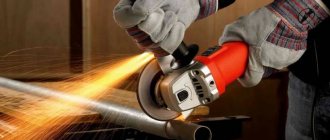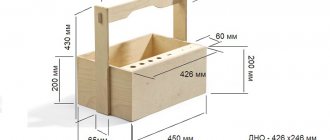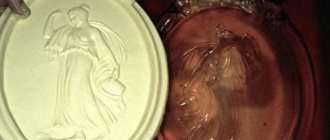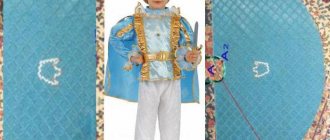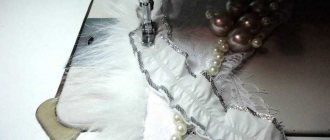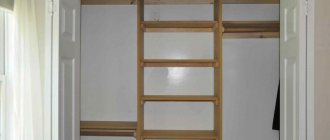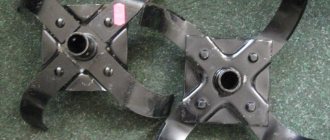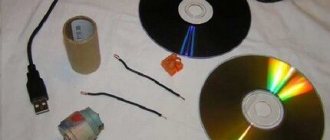You can make your own inhalers from a glass jar, a plastic bottle and cocktail straws. Such devices are easy to use, but effective in treating cough and runny nose, bronchial asthma and sinusitis, pharyngitis and acute/chronic bronchitis, respiratory infections and other respiratory tract diseases. Steam inhalations are considered the best option for preventing seasonal colds.
An alternative to steam inhalers are hot water baths, aromatherapy, nozzle patch, procedures over a saucepan and using a kettle. To carry them out, you don’t even need to do anything - just use the recommendations of specialists.
When you may need to assemble an inhaler yourself
A homemade inhaler will be needed for treatment of:
- any colds - pharyngitis, laryngitis, rhinitis (runny nose), which occur in acute or chronic form;
- diseases of the mucous membrane of the respiratory tract;
- pneumonia, but exclusively at an early stage of development and only with prior permission from the attending physician;
- tuberculosis;
- bronchial asthma;
- bronchitis occurring in acute or chronic forms.
Inhalation procedures will be useful in the postoperative period, when a person is forced to spend a long time in a supine position - the manipulation will serve as a prevention of congestion in the lungs.
We recommend reading the article about why the nebulizer does not nebulize the drug. From it you will learn about the reasons why the nebulizer does not spray the medicine, how to repair the device with your own hands and care recommendations. And here is more information about what you can use and how best to perform alkaline inhalations.
Contraindications
Inhalation procedures are strictly contraindicated at elevated body temperatures - even low-grade fever (within 37-37.5 degrees) should be a reason for refusal. Inhalers should also not be used as part of treatment for:
- pulmonary hemorrhages;
- cardiac arrhythmia;
- heart failure of moderate severity;
- emphysema of the bullous type;
- pneumothorax - spontaneous or post-traumatic;
- sore throat, accompanied by the formation of “ulcers” on the larynx and palatine tonsils;
- tonsillitis.
It is also necessary to take into account the high probability of developing a rapid allergic reaction if a drug or herbal decoction of a hyperallergenic group is used as an inhalation solution. If there is a history of an inadequate reaction of the body to the drug, the procedure should be abandoned and replaced with safer solutions.
Description and purpose
An aerosol spacer is not used by itself these days. After all, if you examine the device, you can see that it is not an independent unit, but an improved inhaler that can easily cure pulmonary diseases.
The spacer looks like a small bottle, on the base of which there are two valves - on one of them there is a tube with which you can inhale the medicine, and on the other there is a socket for inserting the inhaler.
With the help of a spacer, inhalations are quite effective and easy. Therefore, during the course of treatment, many patients are cured of a respiratory disease that is dangerous to their health, and also completely restore their health.
Using a spacer is especially important for people suffering from bronchial asthma. In this case, the device quickly delivers the drug to the bronchi, as a result of which it is possible to completely stop the attack in a few minutes.
The main task of the unit is to smoothly supply the drug to the respiratory organs. After all, when getting rid of attacks or when treating certain diseases, you need to breathe as calmly as possible. In this case, the action of the medication must be fast and accurate. Correct use of the spacer allows you to have a beneficial effect on inflamed areas of the bronchi and lungs with special aerated components ranging in size from 2 to 5 microns.
It is their action in the respiratory organs that is considered the most accurate and fastest. If the drug particles are large, they will settle on the mucous membranes of the nose and mouth, which will not allow achieving a therapeutic effect - therefore, all medications for inhalation should be prescribed by a doctor who will take into account the type of disease and the condition of the adult and child.
Attention! Conventional aerosols, as a rule, have a too fast spray of the drug - as a result, it rarely penetrates the respiratory system, since patients simply do not have time to inhale it completely.
This leads to the fact that the patient simply swallows most of the medicine and it penetrates the stomach without having time to have a therapeutic effect.
Features of a DIY nebulizer
You can literally assemble a nebulizer with your own hands from scrap materials, but it is important to follow one rule - the device must be airtight. The lid on the jar or bottle should fit tightly to the “neck”, steam should come out only from special holes. Only in this case can a targeted effect be achieved with therapeutic vapors.
Advantages and disadvantages
The pronounced advantages of homemade inhalers include:
- use of herbal decoctions and medications in the form of oily liquids for treatment;
- regulation of the temperature of the exiting steam - for a child you can pour a less hot solution, for an adult you can select a higher temperature;
- silent operation - this is important for the treatment of children who are afraid of professional nebulizers and inhalation becomes a meaningless procedure;
- ease of manufacture, low cost of the finished “device”;
- the ability to assemble the device even in “camping” conditions - on a business trip, visiting (outside the home).
But there are certain disadvantages to home inhalers:
- they cannot be used for the procedure in children under 12 months of age;
- Most medications lose their medicinal properties when heated;
- steam inhalations are not practical in the treatment of diseases of the lower respiratory tract.
How effective are steam treatments?
Steam procedures are highly effective, especially if they are used to treat respiratory diseases, cough, and runny nose. Proven benefits of such manipulations:
- the process of liquefaction of sputum is activated, after which it begins to freely exit the respiratory tract;
- local blood circulation improves - oxygen, all nutrients are supplied to the inflamed tissues in full, which automatically increases local immunity;
- the intensity of inflammation decreases - symptoms such as chest pain when coughing disappear;
- drying out of the mucous membranes does not occur - this is important for a runny nose, when the lack of mucus can lead to a worsening of the condition, progression of the disease and its transformation into sinusitis.
When inhalation procedures are performed regularly, a rapid therapeutic effect is observed, because medicinal particles are sprayed in a directional manner, they enter directly into the pathological focus and begin to act almost instantly.
What can you refuel with?
At home, homemade inhalers can be refilled with simple solutions; they are safe and effective at the same time.
What you can use:
| Ingredients for preparing the solution | Preparation of the solution | Photo |
| Baking soda | This is the simplest and most affordable product, which in the form of an inhalation solution makes breathing easier for colds and bronchitis. Prepare a solution of 1 tablespoon of baking soda and 1 liter of hot water. Soda vapor softens the mucous membrane of the respiratory tract, dilutes sputum, which ultimately leads to its rapid elimination. | |
| Table salt | The principle of preparing the solution is identical to soda - 1 tablespoon of dry component per 1 liter of hot water. The saline solution has the greatest effect against the inflammatory process. | |
| Mineral water | It is used in its “pure form”, after completely releasing the gas. Only medicinal mineral waters such as “Narzana” and “Borjomi” will have a therapeutic effect. Such inhalations soften mucous membranes, dilute sputum and promote its complete discharge. | |
| Essential oils | It is enough to add 5-7 drops of pine, eucalyptus, chamomile or any other oil to 1 liter of hot water to make the cough less intense, the nasal passages cleared of runny nose, and breathing becomes free and easy. You just need to know what specific drugs a person is allergic to in order to avoid the rapid development of anaphylactic shock. | |
| Herbal decoctions | They can be prepared from the flowers of chamomile, sage, thyme - plants that have anti-inflammatory, moisturizing properties. Decoctions are prepared from 3 tablespoons of plant material and 1 liter of water, the mixture is simmered in a water bath for 10 minutes, then filtered. Herbal decoctions for inhalation cannot be used in the treatment of children under 3 years of age - even harmless chamomile can provoke an attack of suffocation, swelling of the larynx as an allergic reaction. |
What is an inhalation spacer?
The main purpose of the spacer is to give the patient a certain dose of the drug from an aerosol.
It is convenient in that it can be adjusted from minimum to maximum drug delivery. Almost all medications for the treatment of respiratory diseases are prescribed in inhalation form. Such a device evenly distributes the medication and transports it directly to the most sore spot.
The spacer is not used when powdered drugs are prescribed.
At the moment of sighing, the flow of medicinal aerosol particles slows down and is directed into the bronchi under high pressure.
This is an indispensable thing for those suffering from bronchial asthma, since it is impossible to predict the next attack of suffocation.
A nebulizer of this type makes it possible to carry out the inhalation procedure for children from a very early age, when they are not yet able to understand the correct technique for performing the process. Everything, as usual, you just need to inhale.
The convenient size of the inhaler allows you to always carry it with you.
“When my grandmother got sick, we learned about inhalers such as Aerochamber. After suffering a stroke, she needed additional help. Later we purchased another one for ourselves, as we saw its high efficiency. I can say that colds don’t bother me so often anymore. We recommend it to everyone we know."
Svetlana
How to make your own inhaler from a plastic bottle
A do-it-yourself inhaler is made from a plastic bottle using a liter jar with a lid, drinking straws (tubes) and an empty plastic mineral water bottle.
Manufacturing algorithm:
- Make 2 holes in the jar lid - for a straw/tube and a bottle neck.
- Cut off the bottom of the bottle, making a beveled shape.
- Insert the neck of the bottle into the corresponding hole in the lid of the jar.
- Insert the cocktail straws/tubes into another hole on the lid.
Then the medicinal solution is poured into the jar, and the patient inhales/exhales through a plastic bottle. Its beveled cut imitates an inhalation mask, which ensures a tight fit of this part of the device to the face.
Recommendations from experts:
- the design must be airtight - the lid tightly closes the jar, the plastic bottle “sits” tightly in the hole;
- The edges of the cut bottle should be wrapped with electrical tape - this will make them less sharp and prevent injury;
- the medicinal solution is poured through the neck of the bottle;
- it is advisable to place the jar with the solution in a container of hot water and then begin the procedure;
- you need to inhale the steam slowly and with your mouth, at the “peak” the breath is held for 2-3 seconds;
- exhalation is performed through the nose, and if it is necessary to treat a runny nose, then the inhalation/exhalation algorithm is done in reverse and without delay.
How to make a simple inhaler from a teapot
The simplest inhaler can be made from a teapot:
- Take a small teapot with a small “spout”.
- Pour hot medicinal solution into it and cover with a lid. To seal, place a towel folded in half/three on top.
- Inhalations are performed through the “spout” of the teapot.
Such inhalations can present a certain difficulty - a portion of hot steam is inhaled through a narrow nose and suddenly begins to act, which provokes a coughing attack and unpleasant sensations in the patient. It is better to twist a cone from a sheet of cardboard/thick paper, insert the narrow tip into the “nose” and then begin the procedure – steam will flow in the form of mist.
Expert recommendations:
- It is better to take a clay teapot - you will be able to maintain the temperature of the medicinal solution longer;
- You cannot fill the kettle full - taking a deep breath may absorb some of the liquid, and this is a direct path to burns of the mucous membranes;
- It will not be possible to perform nasal inhalation this way.
Content:
- Preparation of equipment
- Preparing the medicine
- Procedure technique
- Inhalation for children
An inhaler is a device that allows you to deliver a fine aerosol of medicinal substances into the lungs and upper respiratory tract. It is used for cough, difficulty breathing, hoarseness, rhinorrhea, chest pain caused by bronchitis, and difficult sputum discharge. Bronchodilators, antiseptics and antibiotics, mucolytic medications, regenerative agents, decoctions and infusions of medicinal herbs, and moisturizing substances are administered using the aerosol method. People prone to inflammatory diseases of the upper respiratory tract need to know how to use the inhaler correctly.
How to replace a glass inhaler
A glass inhaler can be replaced with a simple device based on a jar with a screw cap. You will also need two straws for drinks, which should be chosen from dense material and medium diameter.
What to do:
- Make two holes in the lid at a distance of 2-3 cm from each other. The diameter of each should correspond to the size of the tubes.
- One straw remains long - so that when you put it into the jar through the hole in the lid, it plunges into the liquid, but does not reach the bottom.
- The second is made short - its tip should “hang” in the axillary space.
- The tubes are inserted into the prepared holes, the lid is screwed onto the jar.
Watch the video on how to make an inhaler from a can:
This homemade inhaler can be used to treat a cough or runny nose - a short tube is simply taken into the mouth or inserted first into one nostril, then into the other. Things to consider:
- the medicinal solution fills half the jar;
- if the tubes enter/exit the holes too freely, then they need to be wrapped with electrical tape;
- Inhalations are slow and deep.
How to make your own inhaler from a saucepan
Making your own inhaler from a saucepan is also easy - you only need a wide-bottomed dish, a towel or a light blanket.
Algorithm of actions:
- Pour the hot medicinal solution into a thick-bottomed pan.
- Tilt your face over the dishes, cover yourself with a towel/blanket on top so that no steam escapes from under it.
- Inhale and exhale through the mouth or nose, depending on the disease being treated.
This method cannot be used to treat children, because one careless movement and the pan will be overturned, burns are inevitable.
Technique for inhalation administration of drugs
The final result depends entirely on how correctly the equipment is used.
The specialist who prescribed this treatment explains in detail how to use the inhaler.
The kit includes a mask that is used for children or patients who are unable to control their breathing. Its use is completely unnecessary, because part of the medicine settles on the face, thereby reducing the dose of exposure to the source of the disease itself.
It is recommended to inhale only one dose per spray. It can be very difficult for children to absorb the entire volume in one breath, for this reason, if necessary, they should take a break for 30 seconds. The technique for using the spacer should be as follows:
Prepare for the procedure:
- Be sure to wash your hands, preferably using gloves. Open the nebulizer and administer the prescribed medication (one dose) as directed. Assemble the spacer and check how it works. Attach the mouthpiece or mask.
- The entire procedure is carried out in a sitting position. The spacer needs to be shaken very well (5 times).
- Cover the mouthpiece very tightly with your lips and exhale. Now press the valve and inhale, but slowly, to get a nice, deep entrance. Duration: three to five seconds.
- Remove the inhaler from your mouth, hold your breath for 10 seconds and exhale very slowly.
- After the procedure, ensure the patient rests for 15-20 minutes. Disassemble the device itself and wash it.
How can you replace a nebulizer at home?
A nebulizer at home can be replaced:
- Bathroom . The hottest possible water is drawn into the bathtub (so as not to get burned), you can add decoctions of chamomile, thyme, sage, a few drops of essential oils, baking soda or table salt. The patient’s time in the bathroom is 10-15 minutes; the procedure can be repeated 3-4 times a day.
Such manipulations make breathing easier and provoke more active mucus discharge by inhaling the most humid air with medicinal vapors.
- Salt procedures . You will need a coffee grinder, a plastic bottle and sea salt. It is important that the size of the bottle matches the diameter of the coffee grinder. Place 2 tablespoons of sea salt into the device, cut off the bottom of the bottle, and place it on the coffee grinder with the lid removed. The coffee grinder is turned on at medium speed, the patient must inhale white “smoke” through the hole in the bottle - this is dust from the smallest particles of sea salt.
It is enough to take 5-6 breaths, the procedure is repeated no more than 2 times a day.
This method is especially effective as a disease prevention during seasonal colds. But even with a normal cough, you can carry out such therapeutic manipulations, the duration of the course is 10 days, even if the condition improved earlier.
- Aromatherapy . You need to mix eucalyptus and pine essential oils in equal proportions in a glass container and place them in the rooms. The vapor will be automatically inhaled by all family members, and this is considered an excellent prevention of seasonal colds. You can add a few drops of mint and citrus fruits to the oil mixture.
You cannot constantly inhale such vapors, because severe headache, nausea, and weakness will appear. But it is useful to open the vessels for manipulation 2 times a day - for example, in the morning and evening before bed.
- Nozzle patch . To make it you need to prepare a patch, a cotton pad and essential oils. You need to drip 2-4 drops of each essential oil onto ¼ of a cotton pad, apply it to the adhesive side of the patch and attach it to the child’s or adult’s clothing in the chest area. Outside, at the place where the cotton pad is attached, you need to make several punctures with a needle, through which vapors of the product will come out.
To prevent colds, as well as coughs and runny noses, you need to use eucalyptus and peppermint oils. The patch can be worn for 3-4 hours in a row, after which a break is taken for several hours. It is better to carry out 2 such manipulations per day.
We recommend reading the article on nebulizer disinfection. From it you will learn about how to disinfect a nebulizer at home, the processing of inhalation masks in health care facilities and the features of proper washing of the nebulizer after the procedure. And here is more information about what can be poured into a nebulizer.
Inhalations at home using homemade devices are a real help in the treatment and prevention of colds, respiratory infections, bronchial asthma, and upper respiratory tract diseases. The low cost of homemade inhalers does not indicate their low effectiveness; it is only important to choose the right medicinal solution.
Bottom line
Inhalers are an effective tool in the fight against colds and infections. You can make them yourself from ordinary household items. However, it is better to buy an inhaler for an infant at a pharmacy chain - a compressor or ultrasonic one. If you are treating a school-age child, you can use any design described in the article. Make sure your baby is not scalded by the hot air.
Similar articles
Nebulizer - contraindications, indications and application features
Nebulizer - instructions for use, rules for inhalation
Proper breathing is the key to effective inhalation!
When inhalations should not be done: useful information for treating children
( 1 ratings, average: 5.00 out of 5)
Is it possible to go outside with the baby after inhalation with a nebulizer?
Previous article
What herbs are used for inhalation for coughs and runny nose?
Next article
Advertisements
Useful video
Watch the video on how to make an inhaler in five minutes:
Similar articles
- Alkaline inhalations: how to do it at home...
When is alkaline inhalation recommended, why are they prescribed for children and adults. How to make nebulizer solutions at home. How will salt-alkaline, alkaline-oil, alkaline from mineral water help? Read more - Oil inhalations: what essential oils can be used…
What oil inhalations are and what they help with. How to use essential oils for acute respiratory infections, coughs, for children and during pregnancy. What inhalers can be used for oil inhalation. What mixtures and drops can be used. Read more
- What can be put into a nebulizer, how and what to fill it with...
How and what can be poured into a nebulizer. How it will help in the treatment of cough, runny nose. What can be refilled with: water, medications for adults and children. Are there any differences for a compression nebulizer? Read more
- Sea salt for inhalation with a nebulizer: how to carry out...
How sea salt is used for inhalation with a nebulizer. How to make a saline solution correctly, how to carry out salt procedures at home, breathe salt. How to treat a salt inhaler. Read more
- The nebulizer does not spray parts: reasons, what to do...
If the nebulizer does not spray the medicine, the reason may be improper operation, clogged nozzle, etc. You can try to make repairs yourself, but in case of some breakdowns it is better to take it to a workshop immediately. Read more
- How to disinfect a nebulizer: how to treat...
Kaike has ways to disinfect the nebulizer, how to do it at home and in the hospital. How to disinfect a mask and inhaler components. How often should you wash your nebulizer? Read more
Types of devices
Essentially, a spacer is an inhaler that has two cone-shaped plastic chambers that are easily disassembled. One part contains a mouthpiece, which is located directly in the patient’s mouth. An inhaler with a dispenser is inserted into another part. The chambers fit tightly to each other and are hermetically joined. This type of spacer is the most common and easy to maintain.
The children's device additionally has a mask with a valve, ensuring high efficiency in supplying the aerosol solution.
There are pocket spacers with a hormonal medication dispenser that are convenient to have with you at all times. This is especially true for patients with bronchial or allergic asthma. The appearance of such a spacer in the photo clearly shows its ease of use. The use of the device eliminates coughing caused by hormones, hoarseness, and the appearance of thrush in the oral cavity. The nozzle is used most often when it is necessary to strictly dose the medicinal solution, as it helps to deliver the drug to the infected areas of the bronchi with the highest quality possible. In addition, its use eliminates the need to combine a sigh and pressing the aerosol can.
